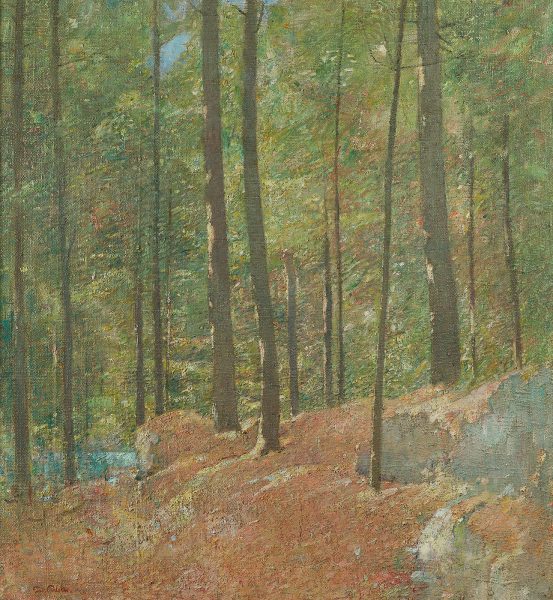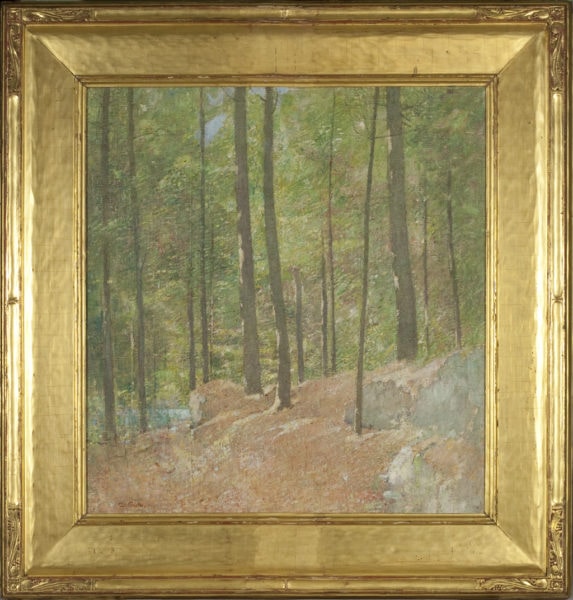Pine Woods
by Emil Carlsen (1853–1932)29 x 27 inches
Signed lower left: Emil.Carlsen.
Information
Provenance
The Macbeth Gallery, New York, New York, 1916
Hammer Galleries, New York, New York
Private collection, acquired from above, 1977
Sale, Heritage Auctions, New York, New York, November 17, 2014, lot 68193
Michael Altman Fine Art and Advisory Services, New York, New York
Exhibited
The Macbeth Gallery, New York, New York, Exhibition of Paintings by Emil Carlsen, Helen M. Turner, Daniel Garber, January 19–February 1, 1916
The Macbeth Gallery, New York, New York, Paintings by American Artists Past and Present, April 6–27, 1916
The Macbeth Gallery, New York, New York, Recent Paintings by Emil Carlsen, N.A., February 9–28, 1921
The International Exhibition of the Fine Arts, Dunedin, New Zealand, New Zealand & South Seas International Exhibition, 1925–26
Hammer Galleries, New York, New York, The Art of Emil Carlsen, January 25–February 19, 1977
Literature
Exhibition of Paintings by Emil Carlsen, Helen M. Turner, Daniel Garber (New York: The Macbeth Gallery, 1916), no. 2.
Paintings by American Artists Past and Present (New York: The Macbeth Gallery, 1916), no. 58.
Recent Paintings by Emil Carlsen, N.A. (New York: The Macbeth Gallery, 1921), no. 12.
The Art of Emil Carlsen (New York: Hammer Galleries, 1977), n.p.
Related Work
Wood Interior, ca. 1910, oil on canvas, 44⅞ x 38 15/16 inches, signed lower right: Emil Carlsen; The Cleveland Museum of Art, Ohio
Artist Biography
Emil Carlsen was one of the twentieth century’s most renowned still life painters, whose work combined sensuous realism with impressionistic technique. Carlsen was born in Copenhagen, Denmark, where he trained as an architect before emigrating to the United States in 1872. Largely self-taught as a painter, he drew inspiration from the old masters and the French Impressionists, spending time in Paris to fully absorb their work. His still lifes bear the humble subject matter and elegant execution of Jean-Baptiste-Siméon Chardin, modernized through an impressionistic use of color and light.
In addition to still life, Carlsen painted landscapes whose architectural compositions



